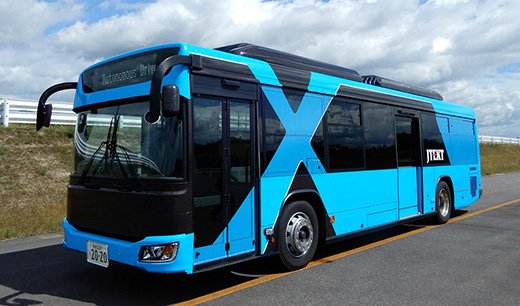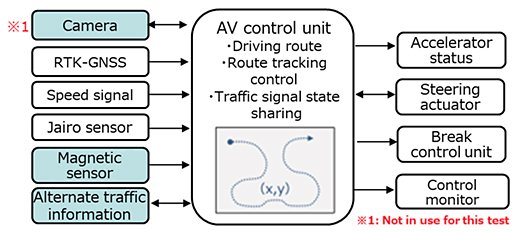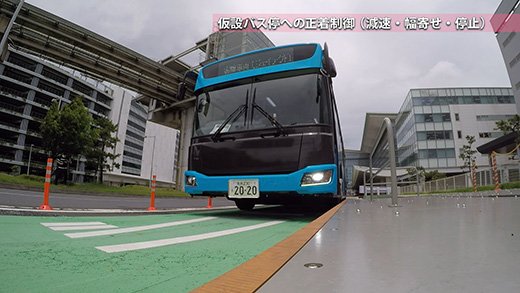Field Operational Tests of autonomous driving
in Haneda Airport Area
-Cross-ministerial Strategic Innovation Promotion Program (SIP) led by the Cabinet Office: 2nd Phase-
JTEKT Corporation is participating in Field Operational Tests at Tokyo Waterfront City area for the 2nd phase of the SIP Program "Autonomous Driving (System and Service expansion)". Field Operational Tests of autonomous driving has been conducted in Haneda Airport Area from June 8 to July 16, 2020.
Based on the results of Field Operational Tests, we will further improve our technology and contribute to solving social issues such as securing mobility for all people, improving driver shortage, and reducing costs by contributing to the realization of a next-generation public transportation system.
 <Test vehicle>
<Test vehicle>
1.Overview of Field Operational Tests in Haneda Airport Area
Field Operational Tests (FOTs) were conducted since June 5, 2020, utilizing Magnetic marker, Public Transportation Priority Systems (PTPS) using ITS radio roadside units, signal information provision, and high-precision 3D map, on the public road connecting Haneda Airport Terminal 3 Building to Haneda Airport Site Zone 1.
The goal is to realize next-generation public transportation system that is acceptable and comfortable for all, equivalent to High Driving Automation (SAE Level 4), by ensuring the punctuality of buses, autonomous driving using magnetic markers, smooth acceleration/deceleration, and precise docking at bus stops.
2.JTEKT's contribution
The test vehicle (Hino Blue Ribbon City) was automatically driven on a 4-kilometer route of public roads via Haneda Innovation City, starting and finishing at a temporary bus stop located in the Haneda Airport Terminal Building. During the FOTs, the vehicle repeated a series of driving patterns, such as starting, driving up to 60 km/h, turning left and right, changing lanes, and precise docking.
The vehicle's location was determined by the AV control unit using magnetic markers embedded in the route and GNSS positioning data. The accelerator, brake, and steering operations were controlled so as to follow the predetermined route.
Control logics of steering actuator is optimized by taking into account the characteristics of the hydraulic power steering system.
 <Diagram of the control>
<Diagram of the control>
 <Stopping with correct arrival control>
<Stopping with correct arrival control>
※The actual driving scene is available in Youtube:
3.Results and future schedule
During the FOTs in Haneda Airport Area, it was able to obtain lots of data under actual traffic conditions, which differed from experiments under limited conditions such as test courses.
It was possible to acquire driving data using multiple positioning methods such as magnetic markers and GNSS.
Through the analysis of the experimental data, further efforts will be focused on the activities to solve issues related to technology, accuracy and social acceptance. JTEKT will contribute to practical application and dissemination of next-generation public transportation system in cooperation with related organizations.